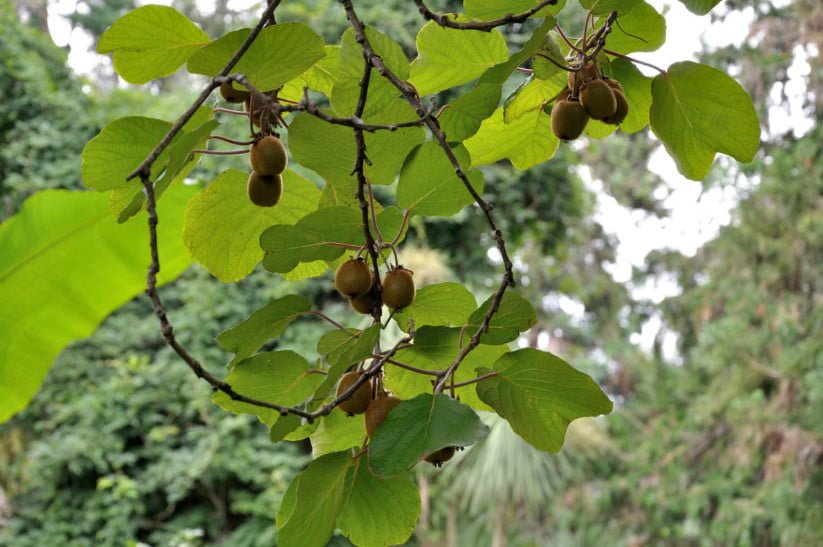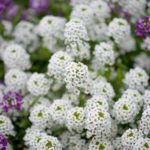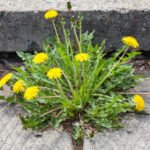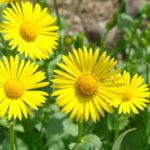In our time, probably many have heard that Actinidia and kiwi are very close relatives. Although novice gardeners may not know what Actinidia is. So today our story about this amazing and unusual plant.
A description of the plant
The genus Actinidia of Actinidiaceae family owns 75 species, native to South-East Asia. Almost all of them are perennial vines, plants are dioecious, that is, women and men grow separately.
Woody shoots Actinidia climb to a very high altitude. The leaves are simple, slightly serrated on the edge, with a sharp tip, arranged alternately. Small flowers from 1.5 to 3 cm sit in the axils of the leaves. Colors are usually white, but there are also yellow.
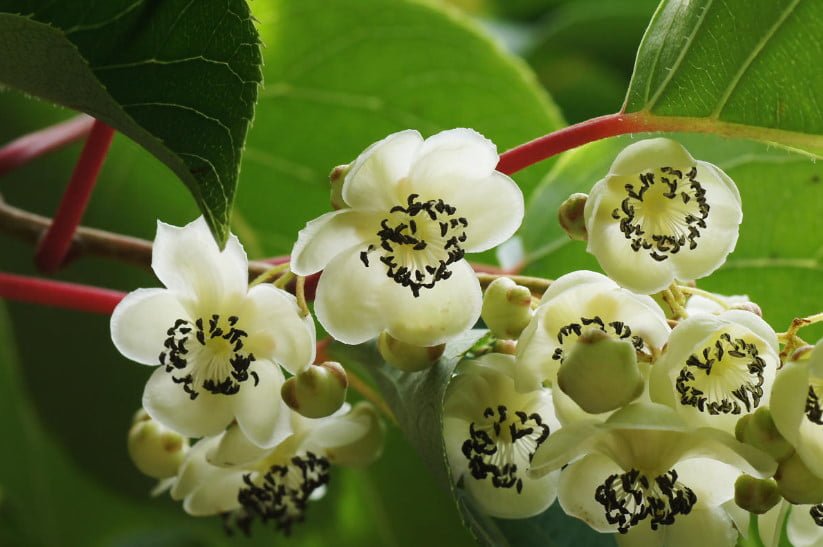
The main advantage of Actinidia-its fruits. These are berries of an oblong shape, yellowish-green color, 2-3 cm in length, delicious and fragrant, having a very rich composition of nutrients. Let’s get acquainted with some representatives of this kind. These ancient plants have been preserved from the pre-glacial period.
Actinidia kolomikta
In the far East, Actinidia kolomikta is growing. Here it is common in forests, on hills, where it rises to a height of from 1000 to 1800 m. Its thin shoots with smooth bark brown grow up to 7 m, climbing the trees.
Beautiful leaves have a feature to change their color in the process of development. First, they have a bronze color, then turns dark green. Before flowering, the tips of the leaves, especially open to light, become white and after flowering gradually turn into pink and crimson.
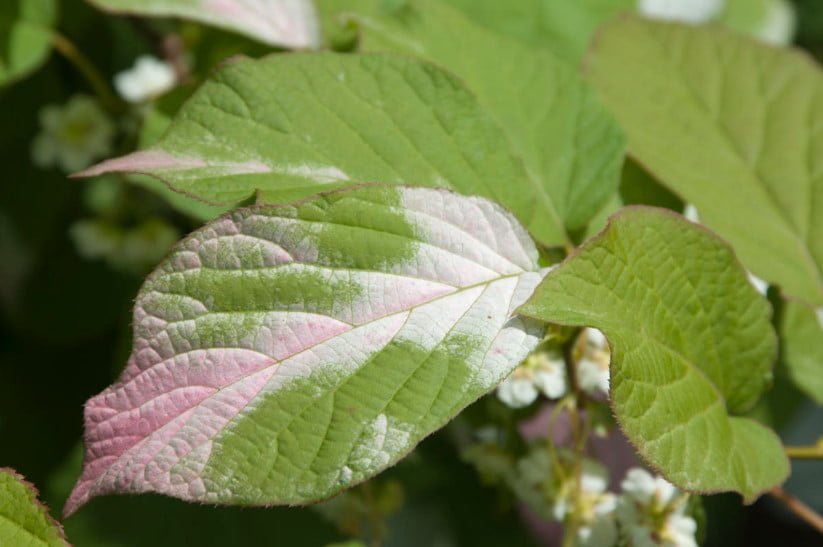
Such elegant leaves with shiny light shoots make the plant decorative. During the flowering period, which lasts 20 days, vines look especially beautiful, they are constantly felt about the aroma produced by elegant white flowers.
After flowering, fruits are formed-elongated berries, similar to small cylinders up to 1.8-2 cm long. They are green with light strokes, have a delicate aroma and pleasant taste.
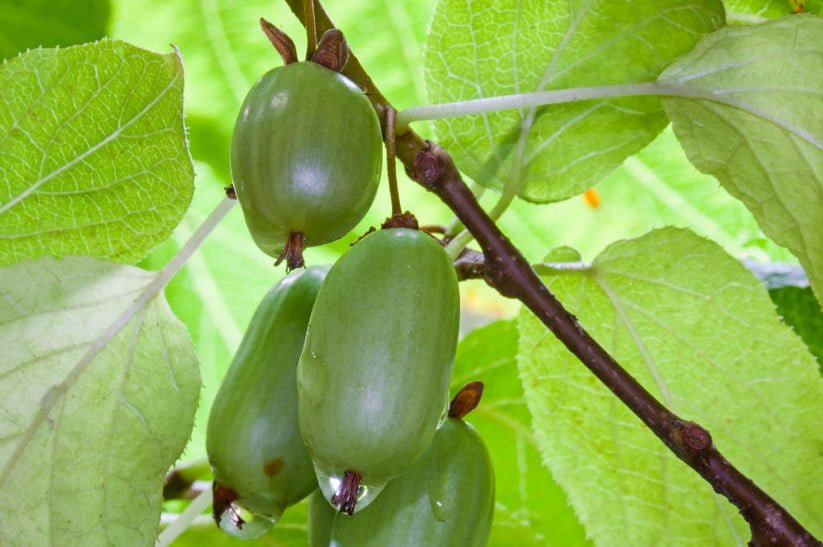
With the onset of autumn, when the leaves of the vine acquire a light yellow, pinkish or purple-red color, kolomikta is also beautiful. This kind of the most winter-hardy, grows well and gives fruit. There are many varieties suitable for cultivation.
Varieties of Actinidia kolomikta
- ‘Grape’. The variety is productive, early – in August the first berries begin to ripen. Ripe fruit about 2.4 cm, with a thin skin of greenish-olive color and a very pleasant sweet, slightly sour taste.
- ‘Sweet tooth’. Matures later, in late August — early September. Berries taste sweet, larger than the Grape, up to 3.4 cm long, with a pointed tip. Covered with orange skin, acquiring different shades.
Other varieties: ‘Waffle’, ‘Coin’, ‘Park’, ‘gourmet’.
Actinidia arguta
Actinidia arguta is found in the forests of Japan, Korea and China. This species is the most powerful of all Actinidia. It grows up to 30 m in height, and the trunk in the area of the root neck reaches 10-20 cm in diameter.
Like powerful ropes, Liana shoots entwine tree trunks, climb on them to the top and here, in the open space, form a mass of branches. Intertwined on the tops of trees, they create a real jungle. Leaves with a dense and shiny plate look very decorative.
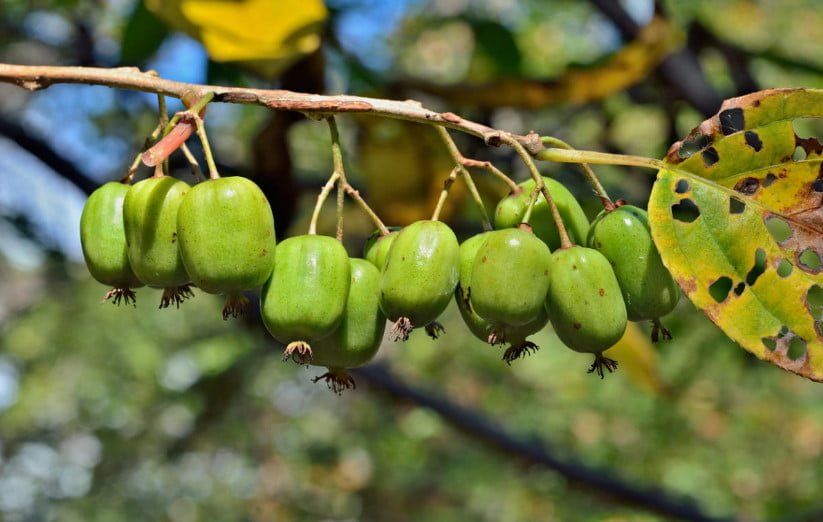
Formed in autumn the dark green fruit of irregular shape with a size of about 2-3 cm When ripe, they become soft and acquire a sweet taste with a faint odor of pineapple.
Varieties: ‘Balsam’, ‘Giant’, ‘Goliath’, ‘Daughter Of Zeya’, ‘September’, ‘Taiga Emerald’, ‘Seaside’.
Actinidia giraldii
Actinidia giraldii is found in China and Korea. Large vine, quickly reaches 25 m height. Compared with previous species, its fruits are the largest (4×2,3 cm), with rough skin brownish-green color. Have a sweet taste.
Varieties: ‘Native’, ‘Juliania’, ‘Alevtina’.
Actinidia polygama
Actinidia polygama is common on the island of Sakhalin, Japan, Korea, North Eastern China. It is somewhat different from the previous species.
Slightly branching shoots reach 5 m in length, the leaves change color throughout growth. Fruitlets orange have a pointed elongated tip.
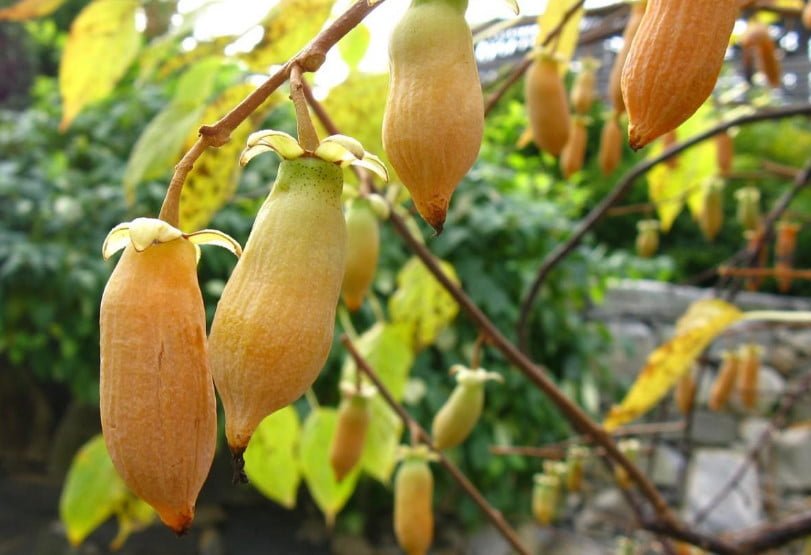
Immature berries have a sharp, slightly burning taste, but after ripening acquire a pleasant sweet taste. This kind of not so hardy, but becomes especially decorative during fruiting.
Varieties of Actinidia polygamous
- ‘Apricot’. Fruits weighing about 4.4 g and a length of up to 3.4 cm with a slightly pointed tip ripen in early September, acquiring an orange color. Variety gives a decent harvest of sweet berries.
- ‘Beautiful’. The variety is resistant to diseases, and is not afraid of winter frosts. Fruits weighing up to 4 g yellowish-green color with a pleasant aroma and slightly sour taste.
Other varieties: ‘yellow spindle’, ‘Beta’, ‘pepper’, ‘Patterned’.
Actinidia chinensis
About the homeland of this species says its name. Liana up to 8 m tall with reddish bark pubescent shoots and large leathery leaves, reaching 12 cm wide.
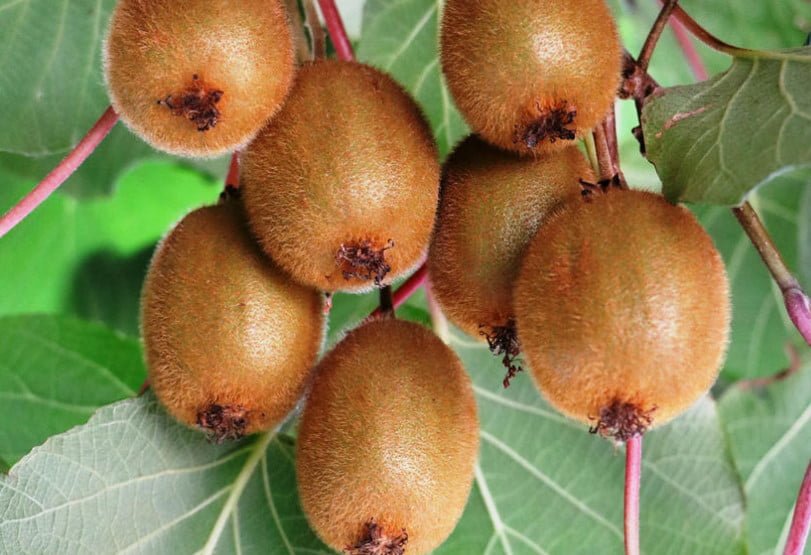
The cultivation of Actinidia
On the site for Actinidia, you should choose a place near the terrace, veranda or make a special support for it. Planting 2-3-year-old seedlings is carried out in early spring. Prepare a hole that is at least 50×60 cm placed On the bottom of the drainage of pebble (not lime stone) into the ground adding organic and mineral fertilizers: compost bucket, 200 g of superphosphate and ammonium nitrate, a Cup of ash. The seedlings are covered with earth to the root collar, and then watered and mulched. Between bushes the distance should be not less than 2 m.
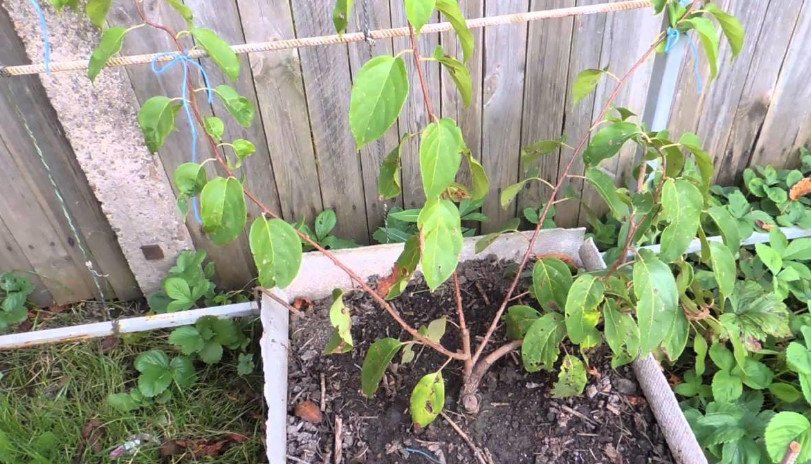
The multiplication of Actinidia
Actinidia arguta is propagated by seeds but often vegetatively (cuttings, root suckers and layering, and grafting). The most simple method of reproduction — the horizontal layering. The right time for this is the end of may. From growing shoots choose one of the strongest, which is placed in a pre-prepared groove, pinned or pressed, watered and covered with earth.
Layering is regularly watered, sprinkled with soil, and by the end of summer in the nodes of shoots formed a good lobe of roots. The next year, the escape is cut and planted young plants. They can be planted for rearing, and can be planted immediately to a permanent place.
The device and formation of the trellis
In the second year for Actinidia, a trellis is prepared, which should be at least 2.5 m tall, and the formation of the plant begins. On a Bush leave 1 or 2 main escapes, others cut off. Also cut dry and broken branches.
A year later, one of the two main vines removed, replacing it with a new one. In the third or fourth year, Actinidia begins to bear fruit-the first fruit-bearing shoots appear. Every 3-4 years, replace one of the main vines, cutting one old main vine, and grow it to replace the new one.
The benefits and beauty of Actinidia in the garden
Actinidia is a plant that will bring double benefit to the garden. First, as a wonderful berry vine, which gives a rich harvest of very nutritious, sweet and vitamin-rich berries.
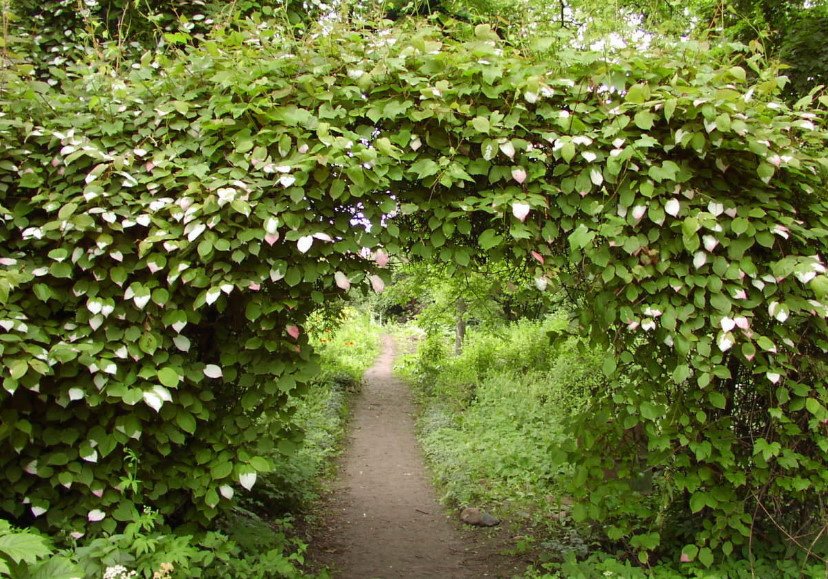
On the other hand, it is a beautiful ornamental plant. Actinidia kolomikta is very attractive at the time of flowering. White flowers up to two centimeters in diameter are beautiful and have a delicate aroma, later it is decorated with variegated leaves. Overgrown vines Actinidia can become magnificent screens in the garden: they will cover the arch, close the unsightly buildings, decorate the veranda, gazebo or terrace.
